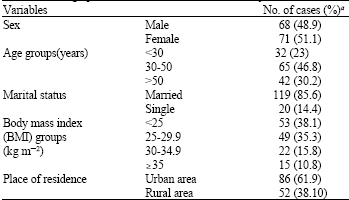Research Article
Prevalence of Hepatitis D Virus Infection in HBsAg Positive Subjects in Iran
Golestan Research Center of Gastroenterology and Hepatology,
Shahryar Semnani
Golestan Research Center of Gastroenterology and Hepatology,
Nafiseh Abdolahi
Golestan Research Center of Gastroenterology and Hepatology,
Abbas-Ali Keshtkar
Golestan Research Center of Gastroenterology and Hepatology,
Sima Besharat
Golestan Research Center of Gastroenterology and Hepatology,
Hamidreza Joshaghani
Golestan Research Center of Gastroenterology and Hepatology,
Abdolvahab Moradi
Golestan Research Center of Gastroenterology and Hepatology,
Khodaberdi Kalavi
Faculty of Paramedicine,
Ali Seyed Mehdi Sedaqat
Golestan Research Center of Gastroenterology and Hepatology,
Ahmad Danesh
Department of Health, Golestan University of Medical Sciences, Golestan Province, Iran
Danial Roshandel
Golestan Research Center of Gastroenterology and Hepatology,
Seyed Mohammad Hedayat-Mofidi
Faculty of Paramedicine,










